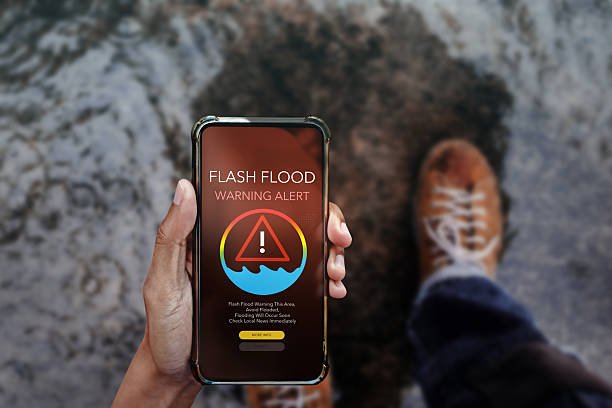
In today’s fast-paced world, drivers are constantly seeking ways to improve safety and avoid unforeseen obstacles on the road. One of the most significant technological advancements in this area is the concept of real-time radar warning systems. These systems provide drivers with instant alerts about nearby hazards, speed traps, or other potential dangers. More recently, free real-time radar warning solutions have become widely accessible, bringing the benefits of high-end safety technology to everyday drivers without the burden of costly subscriptions.
Understanding Real-Time Radar Warning Systems
Real-time radar warning systems are technologies designed to alert drivers about radar detection devices, speed cameras, and traffic enforcement measures. Traditionally, such devices were embedded in navigation systems or specialized apps that required paid subscriptions. However, the emergence of free applications and platforms has democratized access to this life-saving technology.
These systems function through several mechanisms. Many rely on crowdsourced data, where users report radar locations, traffic incidents, or accidents in real time. Other systems integrate with GPS and local law enforcement feeds to provide instant notifications to drivers. Some advanced radar warning solutions can even detect speed enforcement radars directly through radio frequency signals, although such features are typically available in premium devices.
Benefits of Free Real-Time Radar Warning Systems
1. Enhanced Safety on the Road
The primary benefit of radar warning systems is increased safety. By alerting drivers to potential speed traps, dangerous intersections, or accident-prone zones, these systems encourage more cautious and responsible driving. Real-time updates mean that drivers receive alerts as soon as a hazard is reported or detected, allowing them to react promptly and avoid accidents.
2. Cost-Effective Solution
Historically, radar warning systems were expensive, often requiring users to purchase dedicated devices or subscriptions. Free real-time radar warning apps eliminate these barriers, making advanced safety technology accessible to a broader audience. Drivers can now benefit from instant alerts without spending a fortune on high-end devices.
3. Community-Driven Accuracy
Many free radar warning solutions rely on user participation. This crowdsourced model allows for a dynamic and constantly updated database of hazards. Users contribute reports about speed cameras, roadblocks, and traffic accidents, which are then shared with the entire community. This collaborative approach ensures that warnings are accurate, relevant, and updated in real time.
4. Reduced Risk of Traffic Violations
Radar warning systems are particularly beneficial for preventing unintentional traffic violations. Speed cameras and law enforcement radars are often placed in areas with strict speed limits. Real-time alerts help drivers adjust their speed accordingly, reducing the likelihood of fines, points on their license, and legal complications.
5. Stress-Free Driving Experience
Driving can be stressful, especially in unfamiliar areas or high-traffic zones. Free radar warning systems provide peace of mind by alerting drivers to hazards in advance. Knowing that potential dangers are being monitored allows drivers to focus on the road and drive more confidently.
Popular Free Real-Time Radar Warning Solutions
Several platforms and apps have gained popularity due to their reliability, ease of use, and free access. Some of the most well-known options include:
- Waze: Waze is a navigation app with an integrated radar warning system. Users can report speed cameras, traffic jams, and accidents in real time. Its free-to-use model and community-driven updates make it one of the most trusted radar warning platforms globally.
- Google Maps: While primarily a navigation tool, Google Maps now provides alerts about speed traps and road incidents in select regions. Its real-time traffic updates help drivers anticipate delays and adjust routes accordingly.
- Radarbot: This app offers both free and premium versions, with the free version still providing reliable alerts about fixed and mobile speed cameras. It combines GPS data and community contributions to deliver accurate notifications.
- Coyote: Available in some countries, Coyote’s free plan allows users to receive radar and traffic alerts. It also encourages users to report incidents, fostering a safer driving environment through community engagement.
Challenges and Considerations
Despite their advantages, free real-time radar warning systems are not without limitations. The accuracy of crowdsourced platforms depends heavily on user engagement. In areas with fewer active users, alerts may be delayed or incomplete. Additionally, some jurisdictions restrict the use of radar detection devices, so drivers must ensure that their chosen solution complies with local laws.
Another consideration is data privacy. Many free apps collect location and driving behavior data to function effectively. Users should carefully review privacy policies to understand how their information is used and shared.
Future of Real-Time Radar Warning Systems
The future of real-time radar warning technology looks promising. As smartphones become more sophisticated and vehicle-to-everything (V2X) communication develops, radar warning systems are expected to integrate seamlessly with vehicles’ onboard computers. This could enable automatic speed adjustments, predictive hazard alerts, and smarter navigation systems that actively assist drivers in avoiding dangerous situations.
Artificial intelligence and machine learning are also likely to enhance the accuracy of radar warning systems. By analyzing patterns in traffic behavior and accident data, AI-driven platforms could predict high-risk zones before incidents occur, providing proactive warnings to drivers.
Conclusion
Free real-time radar warning systems represent a significant step forward in road safety and driver convenience. By providing instant alerts about speed cameras, traffic hazards, and accident-prone areas, these systems promote safer driving habits and reduce the risk of violations. The combination of community-driven reporting, GPS technology, and real-time notifications has made it possible for anyone with a smartphone to access advanced radar warning capabilities at no cost. While challenges like data privacy and regional legal restrictions remain, the benefits far outweigh the limitations. As technology continues to evolve, free real-time radar warning systems will likely become an integral part of modern driving, helping millions of drivers navigate the roads more safely and confidently.